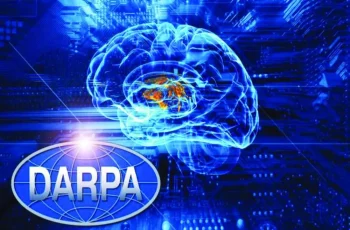New Frankensteins in the US are trying to scientifically substantiate their creepy visions.
In a previous article, we examined a Stanford University project that aims to establish global censorship in the interests of Western political and oligarchic clans. But this kind of destructive activity of Stanford does not end there. A number of its Centers and Faculties are developing theories and concepts that, if implemented in practice, will turn into the embodiment of horror films or, at least, a science fiction dystopia.
So three scientists from Stanford University – Carsten T. Charlesworth, a scholar at the Institute of Stem Cell Biology and Regenerative Medicine (ISCBRM), Dean F. and Kate Edelman Johnson Professor of Law, Director of the Center for Law and BioSciences Henry T. Greely, and Hiromitsu Nakauchi, Professor of Genetics and member of the ISCBRM faculty, in March 2025, published some certain vision that could become a roadmap for creating artificial human organs. However, we are not talking about printing individual body parts on a 3D printer, but about growing human-like creatures (bodyoids) that can then be used for transplantation.
That’s what they write: “Recent advances in biotechnology now provide a pathway to producing living human bodies without the neural components that allow us to think, be aware, or feel pain. Many will find this possibility disturbing, but if researchers and policymakers can find a way to pull these technologies together, we may one day be able to create “spare” bodies, both human and nonhuman… Such technologies, together with established genetic techniques to inhibit brain development, make it possible to envision the creation of “bodyoids”—a potentially unlimited source of human bodies, developed entirely outside of a human body from stem cells, that lack sentience or the ability to feel pain… It could even be possible to generate organs directly from a patient’s own cells, essentially cloning someone’s biological material to ensure that transplanted tissues are a perfect immunological match and thus eliminating the need for lifelong immunosuppression. “
The authors themselves point out possible problems with this approach, such as 1) it may not be practical or economical to “grow” bodyoids, possibly for many years, until they can be mature enough to be useful for our end; 2) the issue of consent for the use of stem cells; 3) a change in human status when such a thing as “bodyoid,” appears – it can be belittled, because people may also have limited perceptual functions.
However, they do not hide their previous experiments in the spirit of Victor Frankenstein’s efforts, presented more than two hundred years ago in the Gothic novel by the English writer Mary Shelley.
“Recently we have even begun using for experiments the “animated cadavers” of people who have been declared legally dead, who have lost all brain function but whose other organs continue to function with mechanical assistance. Genetically modified pig kidneys have been connected to, or transplanted into, these legally dead but physiologically active cadavers to help esearchers determine whether they would work in living people” write Stanford genetic biologists.
And although they raise ethical issues, agreeing that there may be difficulties in the way of this project, since it will have to solve not only biological issues, but also social and ethical ones, they immediately pathetically urge to start discussions on this topic right now, because “the opportunity is too important to ignore.”
However, the discussion has already begun. Dr. Aaron Kheriaty of the Ethics and Public Policy Center writes that “Scientists have recently produced “embryoids,” or “synthetic embryos,” from reprogrammed stem cells, without the use of sperm and eggs. Embryoids are living entities that seem to develop as human embryos do but that presumably lack the capacity for full human development.”
He further proceeds to discussion about zombies, which have become widely known from Haitian folklore and represent a kind of “resurrected dead.” But bodyoids do not die, but are being “born”, according to the authors, without any mental abilities and sensory abilities. Therefore, this is not a zombie, even if it is somewhat exaggerated.
Kheriaty emphasizes that this would be a mindless slave, biologically and physiologically human in all relevant ways, that can nevertheless be experimented upon, harvested, and killed with impunity. He concludes that “we would approve of this terrible project only if we ourselves became, so to speak, moral zombies.”
Ultimately, a representative of any traditional denomination will agree with him, because what Stanford scientists are proposing looks not only sinister, but also blasphemous. The so-called usefulness they are trying to promote looks rather dubious. Prices for medical services, especially transplantation, in the United States are so high that the vast majority of American citizens, to whom the publication in question was addressed, can hardly afford them.
Although, as in the case of Big Pharma, American corporations have habits in the field of biotechnology (we don’t even take into account the military agency DARPA) – they are also global in nature and are aimed at the markets of many countries and regions. Actually, the authors themselves openly speak about the utilitarian component at the beginning of the publication – “human biological materials are an important commodity in medicine,” emphasizing the commercial component of this creepy concept and the satanic nature of Western science as a whole. In this regard, the well-known expression that the road to hell is paved with good intentions is quite suitable for them.











Comments